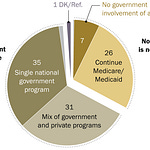When people hear the word “class,” they often picture old-fashioned royalty and peasants, or maybe some outdated Marxist slogan. But social class is alive and well today—and it shapes nearly every aspect of our lives, whether we notice it or not.
What Is Social Class, Really?
Social class isn’t just about how much money you have. It’s about your background, your education, your family connections, your job security—even the way you speak or dress. In modern America, class is an invisible system that quietly decides who gets a head start and who stays stuck at the bottom.
How Does Class Get Created?
Family Background: If you’re born to parents with wealth, college degrees, or connections, your odds of success skyrocket. In the US, children born into the top 20% of households are more than twice as likely to stay at the top as adults (Pew Research Center, 2020).
Education: Quality schools and universities open doors, but getting into them often depends on your ZIP code or family income. Elite colleges enroll more students from the top 1% than the entire bottom 60% (NY Times, 2017).
Social Networks: “It’s not what you know, it’s who you know.” People from higher classes help each other—sharing job leads, internships, and even legal or financial advice.
Culture & Habits: The way you talk, dress, and interact can mark you as an “insider” or “outsider,” helping or hurting your chances in certain spaces.
Access to Resources: Good healthcare, tutoring, and even safe neighborhoods all play a role.
The Myth of Social Mobility
Americans love to believe in the “self-made” story—the idea that anyone can rise to the top through hard work. But data tells another story:
In the U.S., only about 7.5% of people born in the bottom 20% make it to the top 20% as adults (Federal Reserve, 2021).
Your parents’ income is still the single best predictor of your own future income (Pew Research, 2020).
The US now ranks lower than Canada, Germany, and the UK in upward mobility (World Economic Forum, 2020).
Why Is Class Getting Harder to Escape?
As costs for housing, education, and healthcare skyrocket, it’s harder than ever for people at the bottom to climb up. Legacy admissions, unpaid internships, and expensive “networking” keep the top exclusive. In 2022, the median white family held about eight times the wealth of the median Black family (Federal Reserve, 2023). And when family wealth gets passed down, the rich keep getting richer—not just in dollars, but in opportunity.
The Consequences
Class doesn’t just decide your income—it influences your health, your sense of belonging, your stress, and even your life expectancy.
If society keeps ignoring these invisible walls, resentment, division, and hopelessness will keep growing.
So What Now?
The first step is to see class for what it is: a real, powerful force shaping lives every day.
How do we break the cycle? Maybe it’s time to talk honestly about how the system actually works—no more fairy tales.










